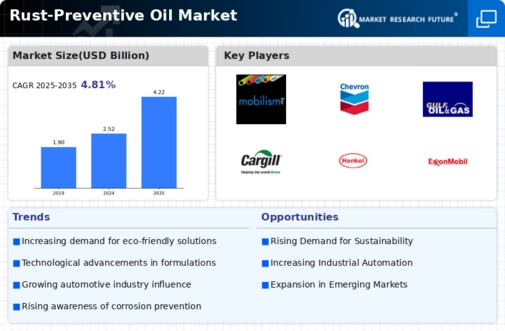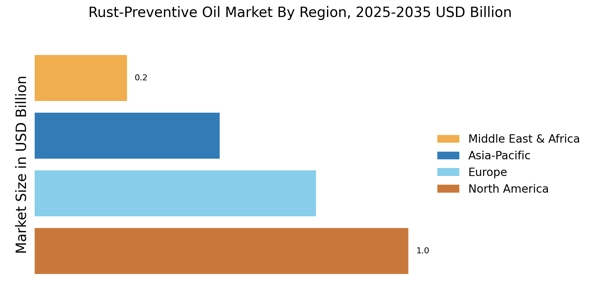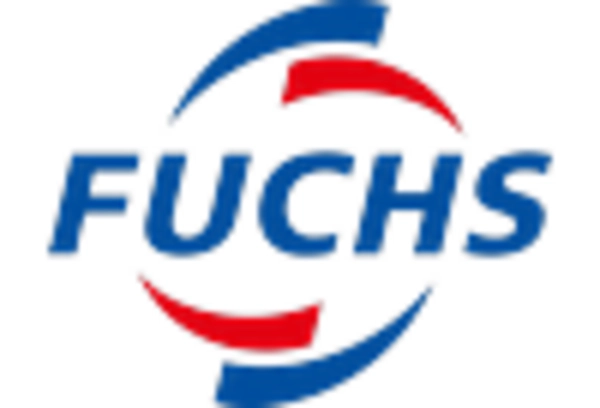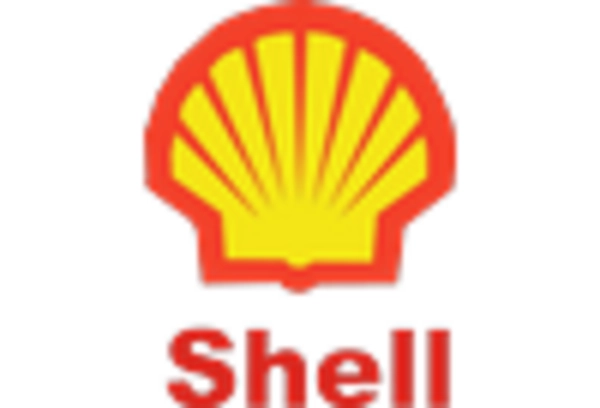Growth in Automotive Sector
The automotive sector's expansion is a significant driver for the Rust-Preventive Oil Market. With the increasing production of vehicles, the demand for rust-preventive oils to protect automotive components from corrosion is on the rise. The automotive industry is projected to grow at a rate of approximately 3% annually, which directly correlates with the demand for rust-preventive solutions. As manufacturers focus on enhancing vehicle durability and performance, the use of high-quality rust-preventive oils becomes essential. This trend is likely to continue, as automotive manufacturers seek to meet consumer expectations for longevity and reliability in their vehicles.
Increasing Industrialization
The ongoing trend of industrialization across various sectors appears to be a primary driver for the Rust-Preventive Oil Market. As manufacturing processes expand, the need for effective rust prevention becomes paramount. Industries such as automotive, aerospace, and heavy machinery are increasingly reliant on rust-preventive oils to protect their equipment and products from corrosion. In fact, the demand for rust-preventive oils is projected to grow at a compound annual growth rate of approximately 4.5% over the next five years. This growth is likely fueled by the rising production levels and the need for maintenance of machinery, which underscores the importance of rust prevention in ensuring operational efficiency and longevity of equipment.
Regulatory Compliance and Standards
The Rust-Preventive Oil Market is also shaped by stringent regulatory compliance and standards that govern the use of chemicals in various applications. Governments and regulatory bodies are increasingly implementing guidelines to ensure that products used in industrial processes are safe and environmentally friendly. This has led to a shift towards the development of bio-based and eco-friendly rust-preventive oils. Companies are now compelled to adapt their formulations to meet these regulations, which may drive innovation within the industry. The market for eco-friendly rust-preventive oils is expected to witness a notable increase, as manufacturers seek to comply with regulations while also appealing to environmentally conscious consumers.
Rising Awareness of Equipment Longevity
There is a growing awareness among manufacturers and consumers regarding the importance of equipment longevity, which significantly influences the Rust-Preventive Oil Market. As businesses strive to reduce operational costs, the focus on maintaining equipment in optimal condition has intensified. Rust-preventive oils play a crucial role in extending the lifespan of machinery and tools, thereby minimizing replacement costs. Recent studies indicate that companies utilizing rust-preventive oils can experience a reduction in maintenance costs by up to 30%. This awareness is likely to drive demand for high-quality rust-preventive oils, as organizations seek to invest in products that offer long-term benefits and reliability.
Technological Innovations in Formulations
Technological advancements in the formulation of rust-preventive oils are likely to propel the Rust-Preventive Oil Market forward. Innovations such as nanotechnology and the development of advanced additives are enhancing the performance of rust-preventive oils. These innovations not only improve the protective qualities of the oils but also extend their applicability across various industries. For instance, the introduction of water-based rust-preventive oils has gained traction due to their lower environmental impact and improved safety profiles. As manufacturers continue to invest in research and development, the market is expected to see a surge in innovative products that cater to diverse industrial needs.


















Leave a Comment